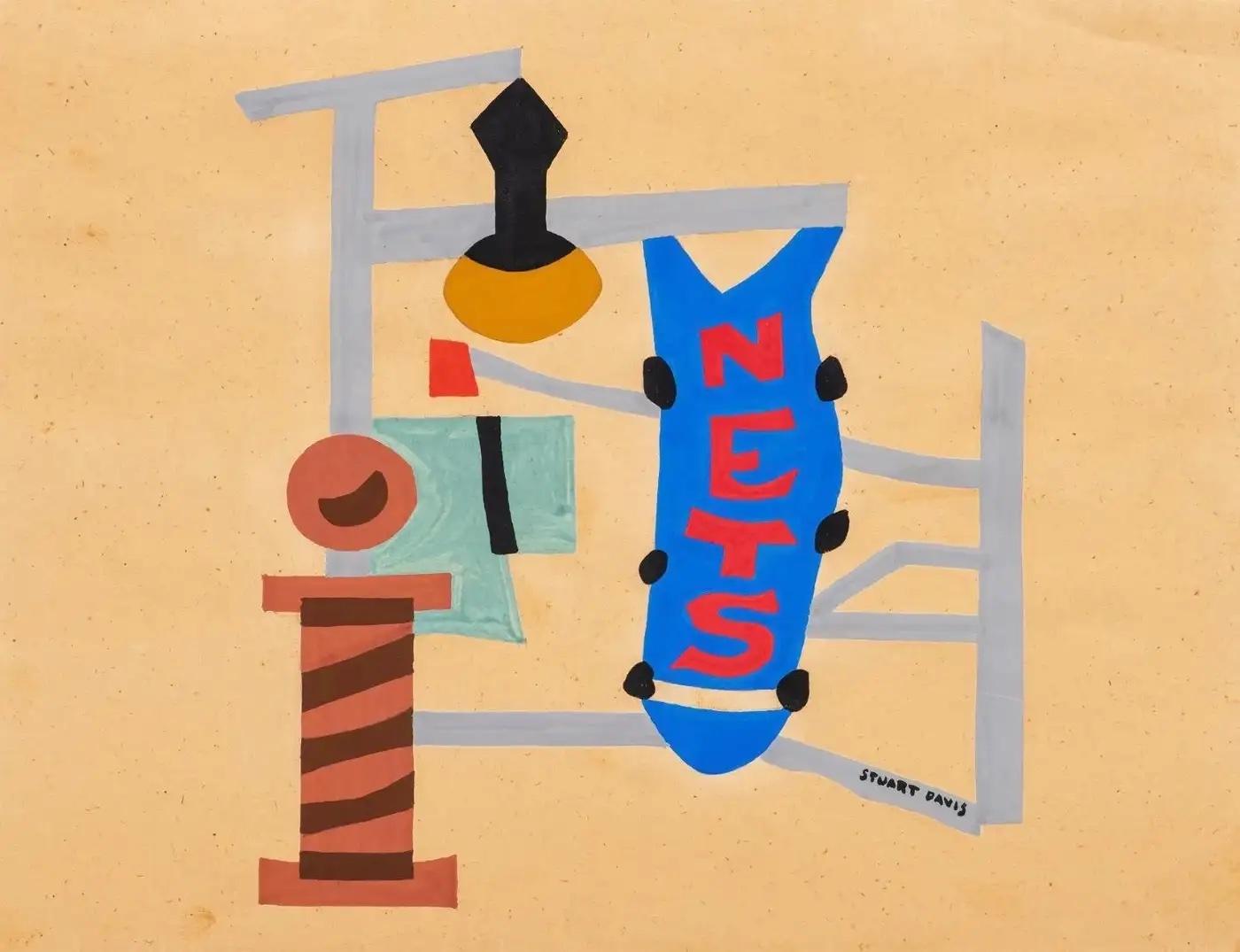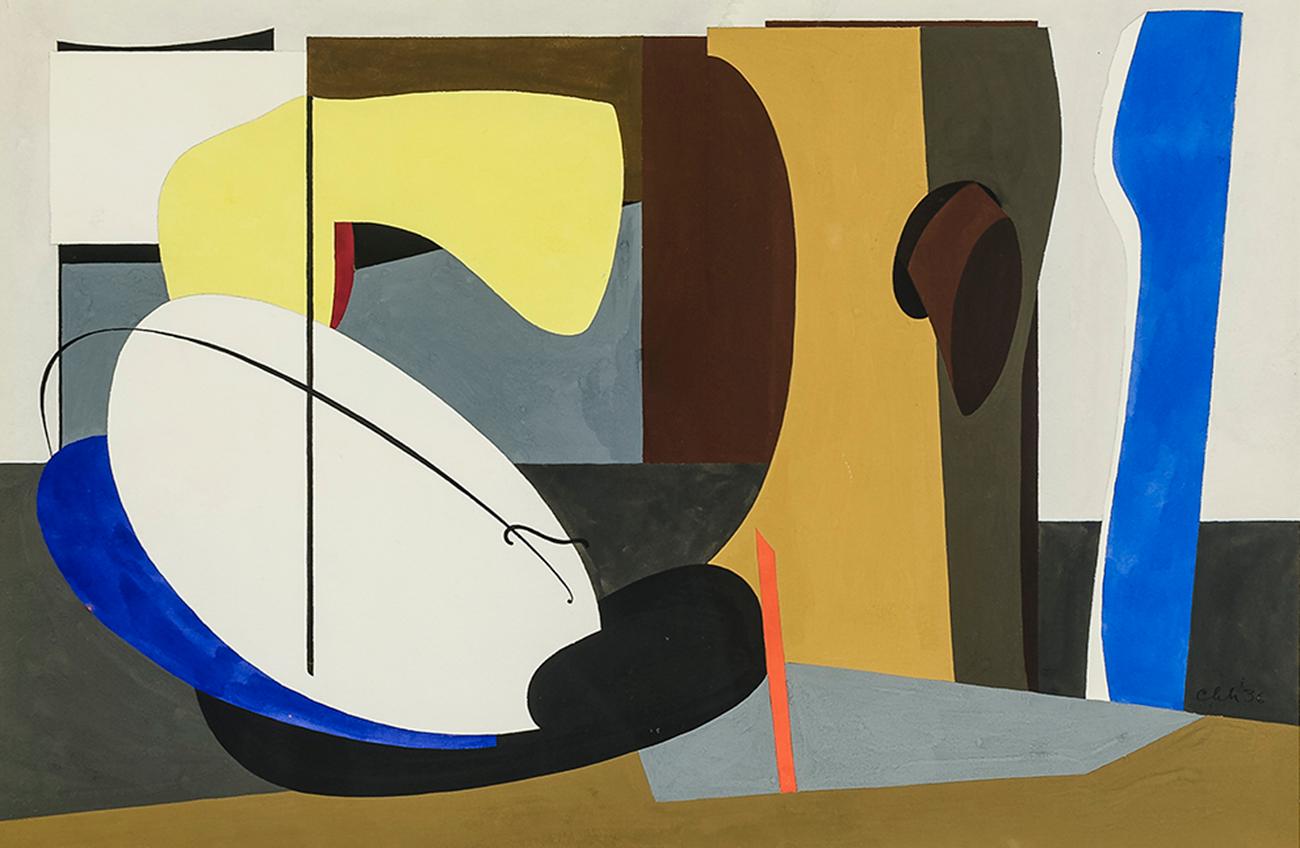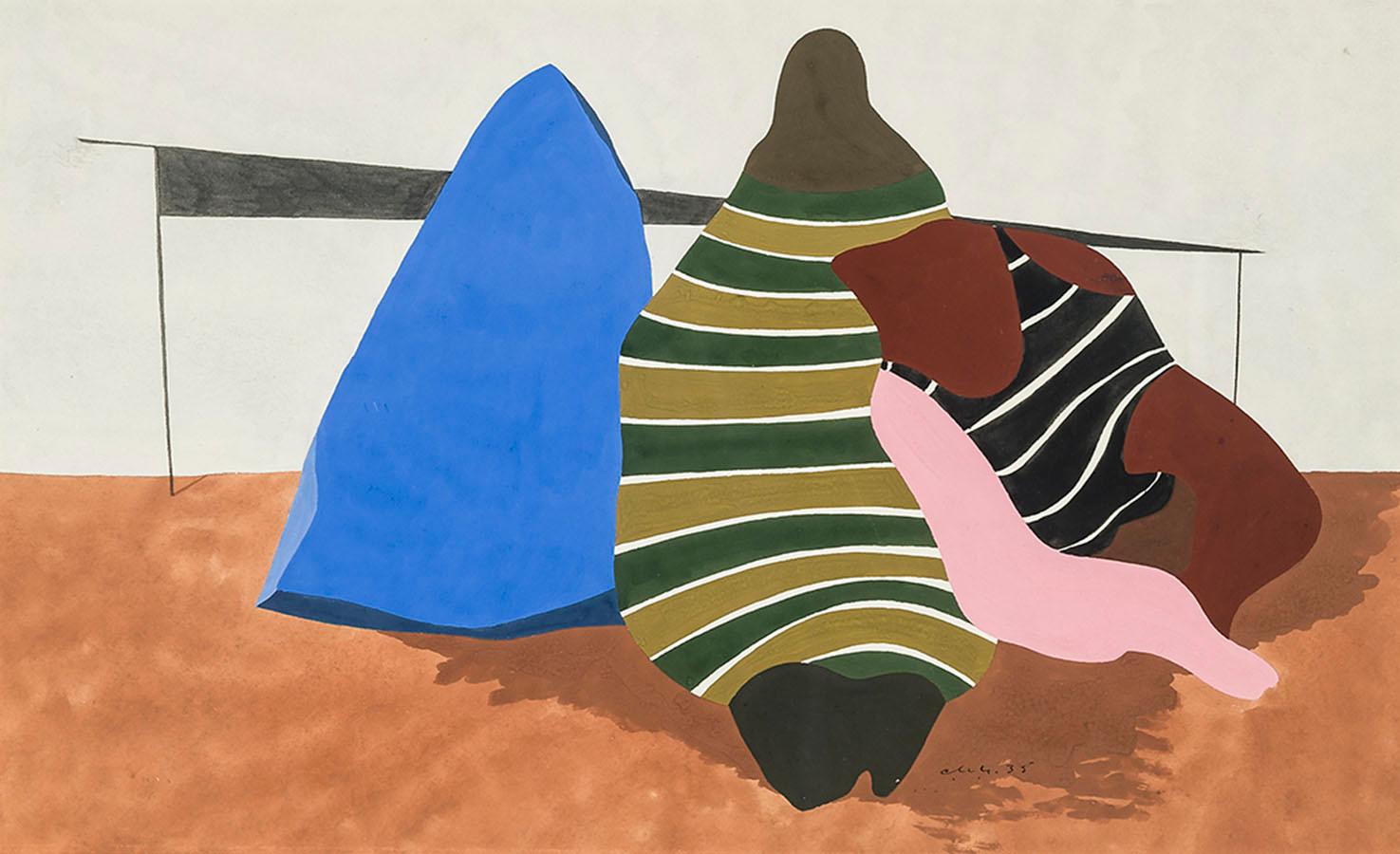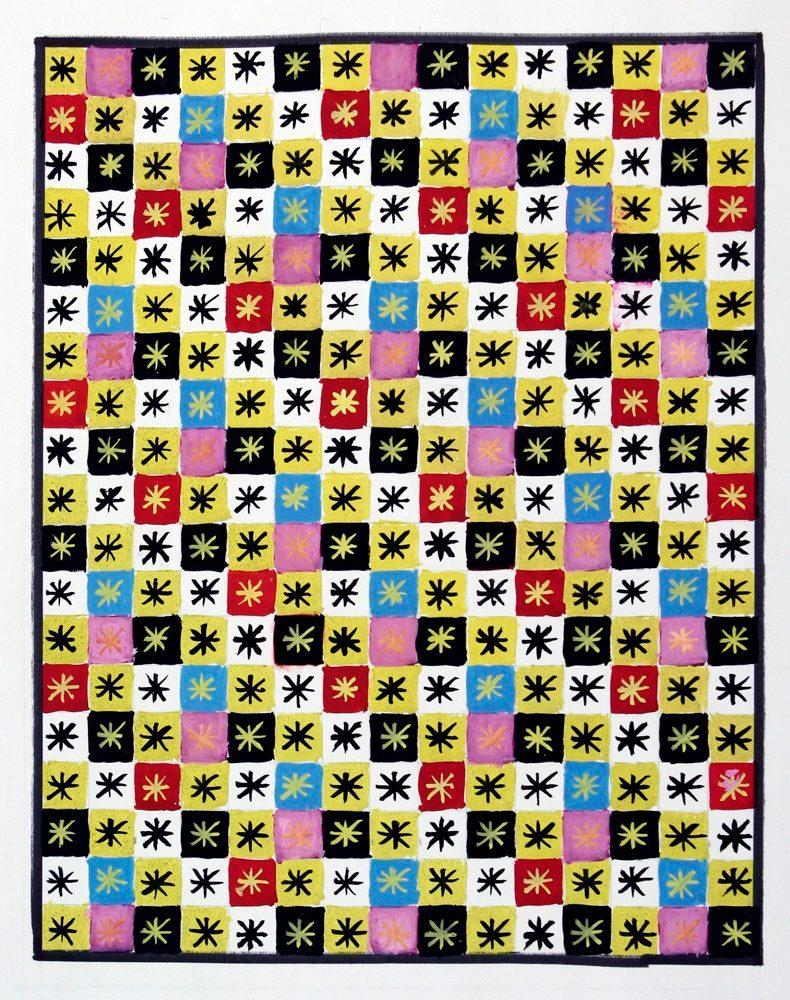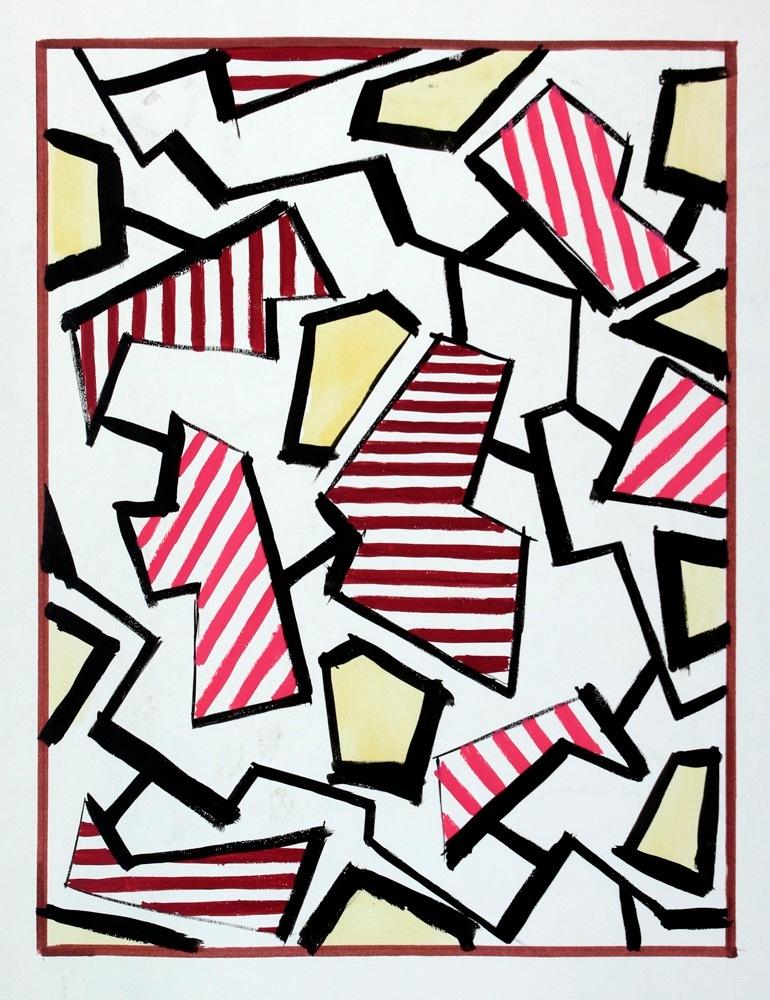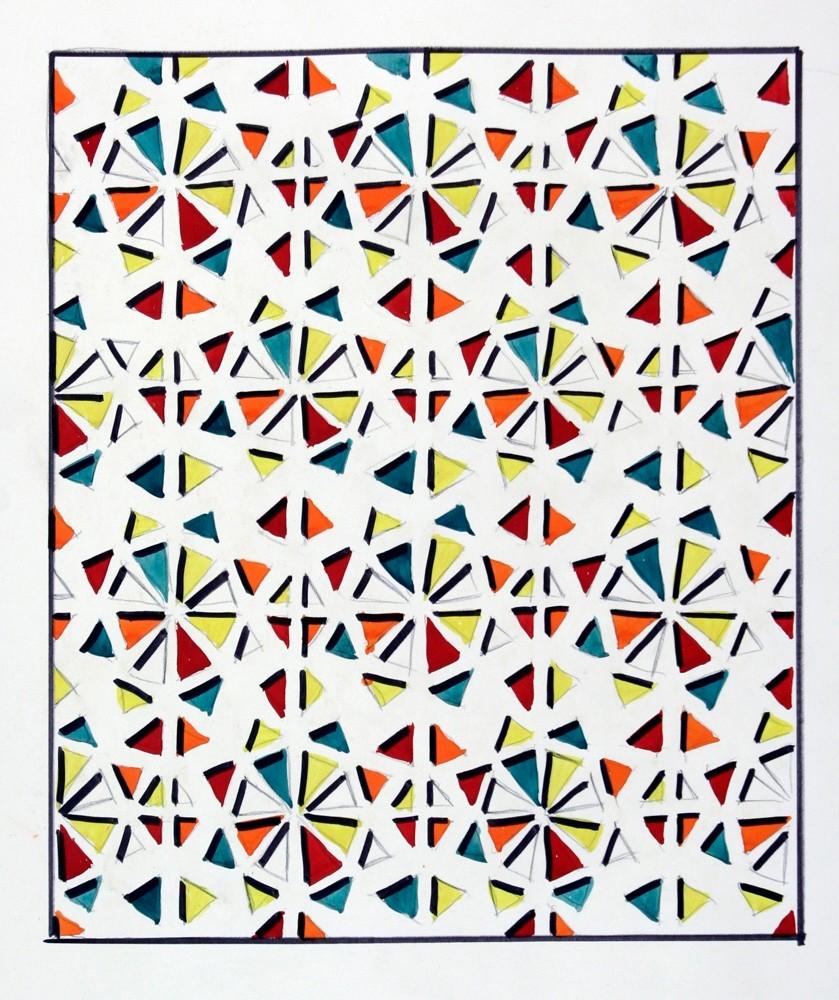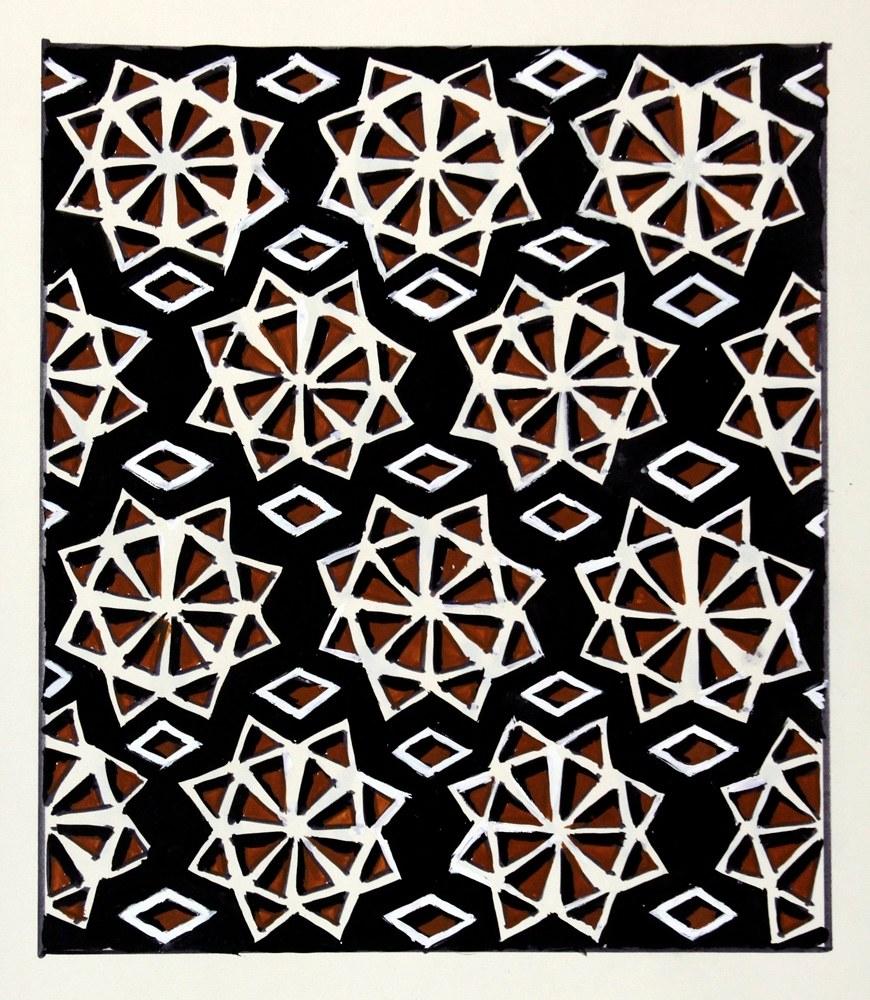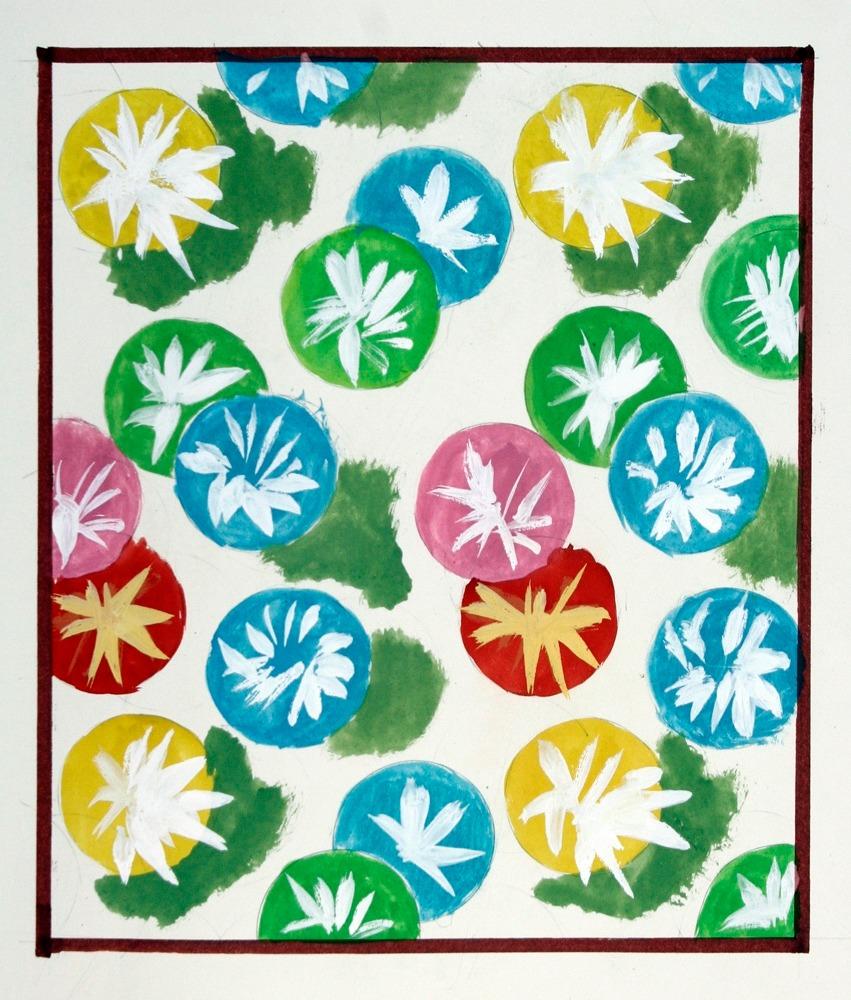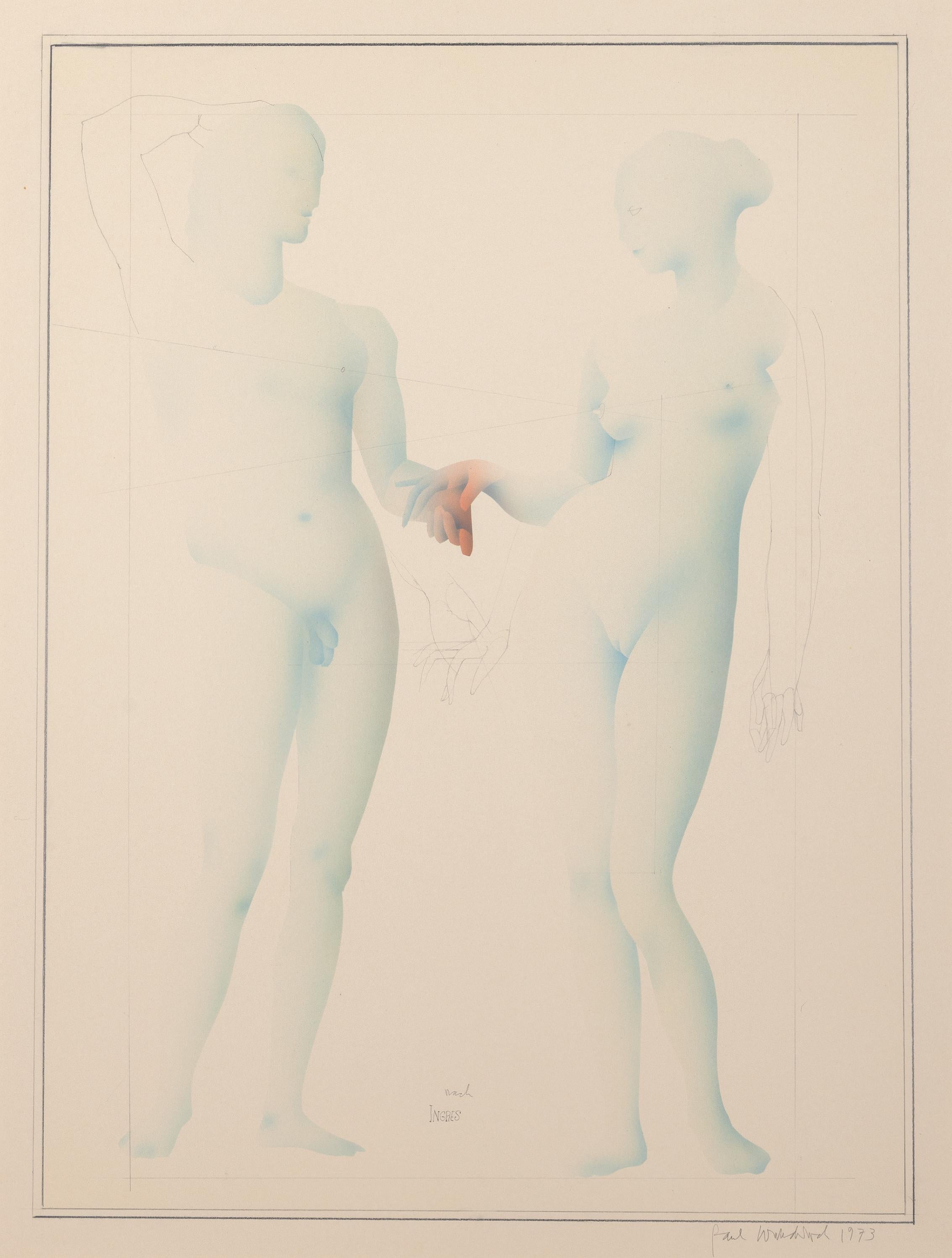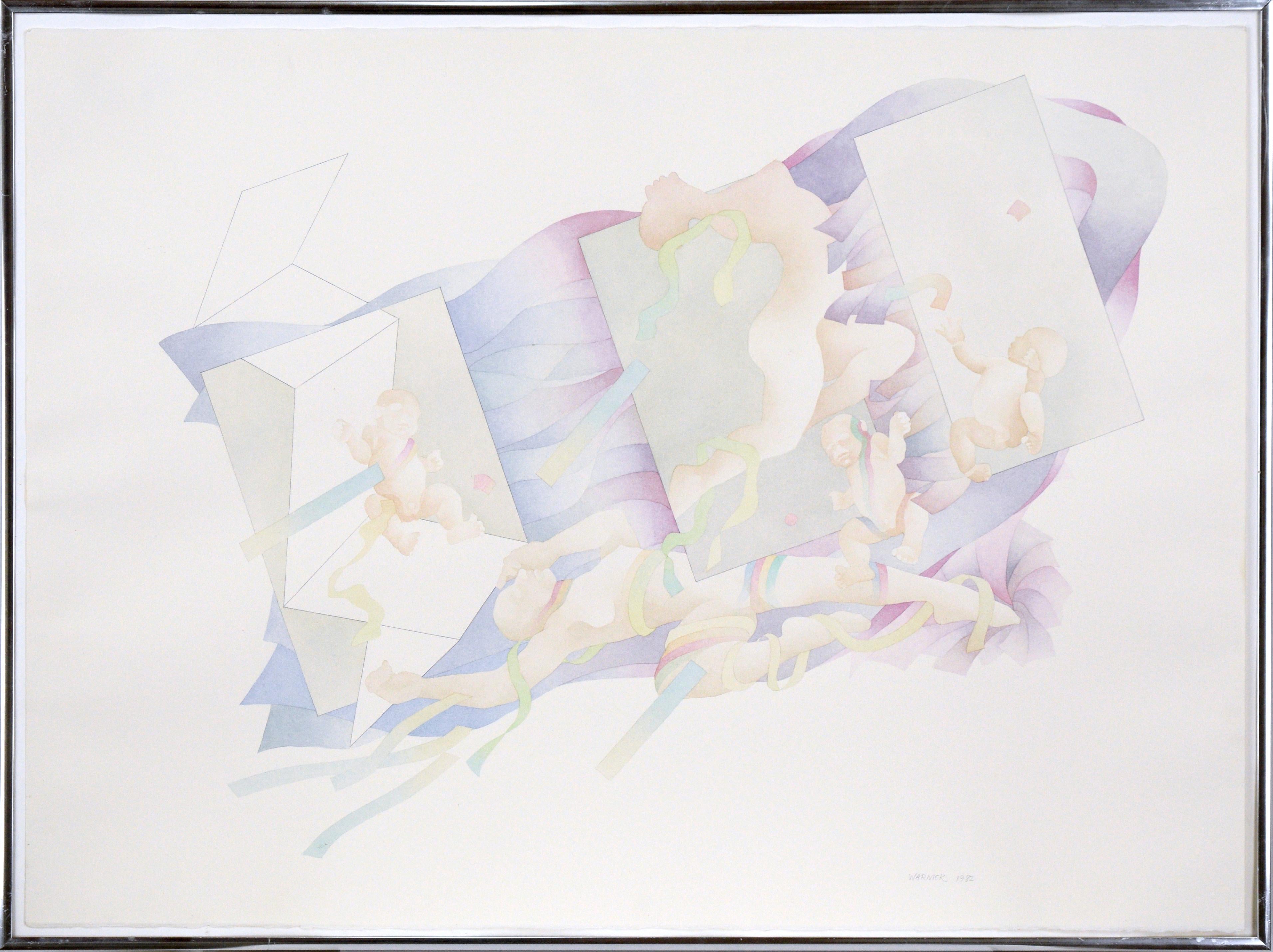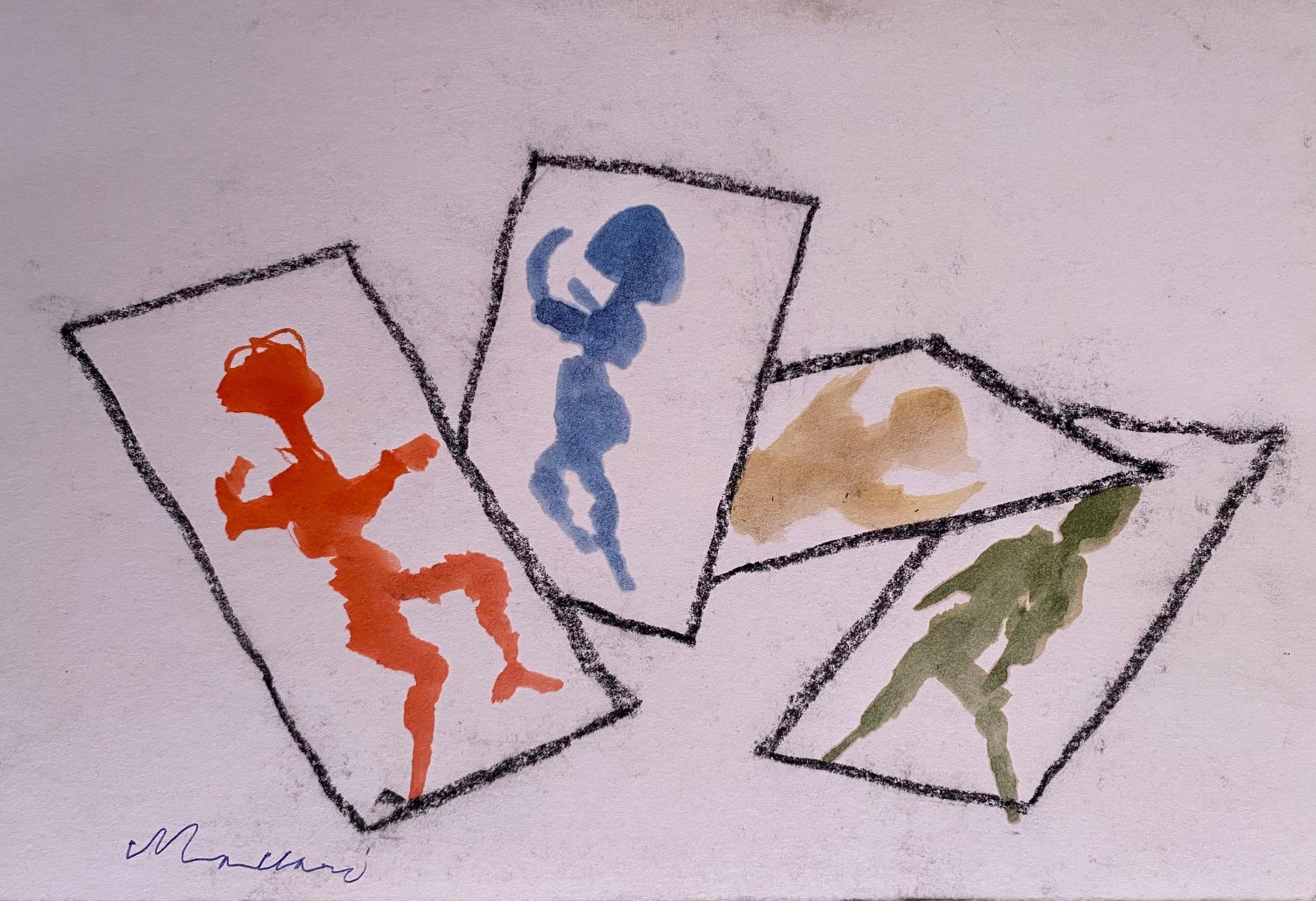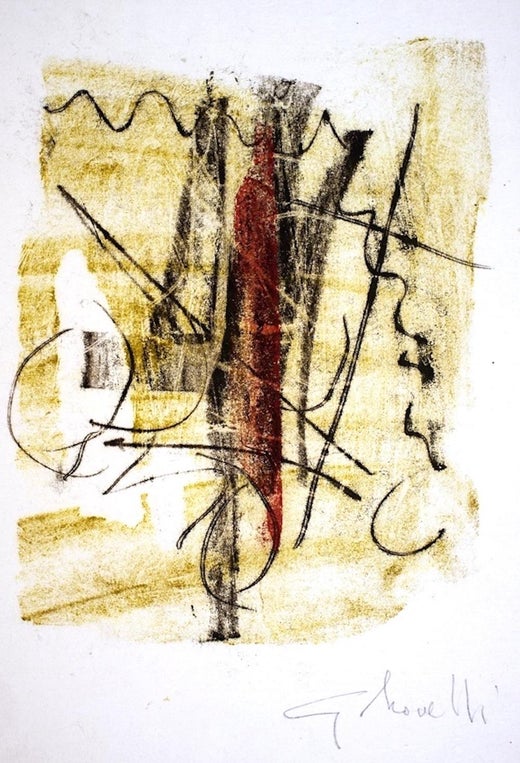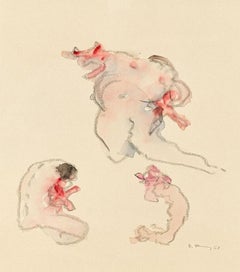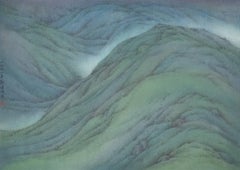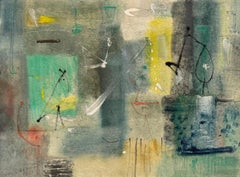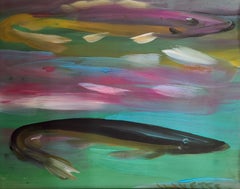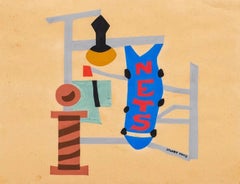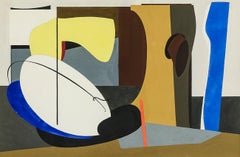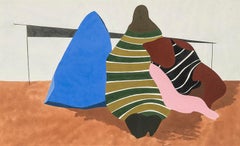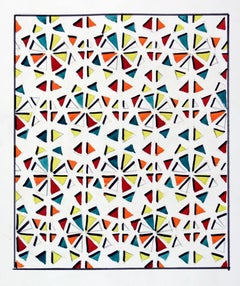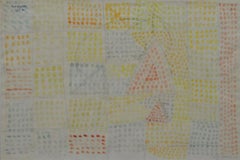
Non ce Tempo - Important Italian Artist 1965 watercolor & pencil on paper
View Similar Items
Want more images or videos?
Request additional images or videos from the seller
1 of 9
Gastone NovelliNon ce Tempo - Important Italian Artist 1965 watercolor & pencil on paper1965
1965
$8,500List Price
About the Item
- Creator:Gastone Novelli (1925 - 1968, Italian)
- Creation Year:1965
- Dimensions:Height: 13 in (33.02 cm)Width: 18 in (45.72 cm)
- Medium:
- Movement & Style:
- Period:
- Condition:
- Gallery Location:Rancho Santa Fe, CA
- Reference Number:1stDibs: LU516311246622
Gastone Novelli
Gastone Novelli was born in Vienna on August 1, 1925. He received a classical education in Rome, where he had moved with his family, and became involved in the Italian resistance movement in 1943. He was arrested and then freed the following year. In 1945 he moved to Florence and earned a degree in political science. After the war he started painting and producing graphic works that were greatly influenced by the Neo-Constructivist theories of Max Bill, who he had met while staying in Zurich in 1947. In 1950 he moved to Brazil and devoted himself to the applied arts, teaching, and research into Geometrical Abstraction. In 1951 and 1953 he participated in the São Paulo Bienal. In December 1954 he went back to Rome and met Corrado Cagli and Achille Perilli; the following year he exhibited at the Galleria La Cassapanca and Studio B24. In 1957 he took several trips to Paris and met the Surrealists Jean Arp, André Masson, Man Ray, and Tristan Tzara. He exhibited at Galleria La Salita in Rome and was clearly influenced by Art Informel. The same year, he founded the L’esperienza moderna magazine with Perilli and started collaborating with poets and writers. Novelli was introduced to contemporary trends in American art by Willem de Kooning, Robert Rauschenberg, and Cy Twombly, who were active in Rome at the time. In 1959 he exhibited in the Galleria l’Ariete in Milan and participated in many groups shows in Italy and abroad. In 1960 he had a solo exhibition at the Galleria La Tartaruga in Rome and took part in the show Crack at the Galleria Il Canale in Venice. The following year he returned to Paris once again, where he met Geroges Bataille, Samuel Beckett, Pierre Klossowski, and Claude Simon, and had a private show at the Galerie du Fleuve. In 1962 his work was shown at the Alan Gallery in New York, and he spent some time travelling in Greece. Two years later a major exhibition of his work was presented at the Kunstverein of Friezeburg; he won the Premio Gollin at the Venice Biennale and founded the Grammatica magazine with Alfredo Giuliani, Giorgio Manganelli, and Perilli. His first political work was produced in 1966, amid a climate of much protest and civil unrest. The following year he moved to Venice and published the comic book I viaggi di Breck. When invited to participate in the Venice Biennale in 1968, he refused to show his work and, as a form of protest, exhibited it face down against the walls. Novelli died in Milan on December 22, 1968. (The Solomon R. Guggenheim Foundation)
About the Seller
5.0
Vetted Professional Seller
Every seller passes strict standards for authenticity and reliability
Established in 1984
1stDibs seller since 2016
88 sales on 1stDibs
Typical response time: 17 hours
Authenticity Guarantee
In the unlikely event there’s an issue with an item’s authenticity, contact us within 1 year for a full refund. DetailsMoney-Back Guarantee
If your item is not as described, is damaged in transit, or does not arrive, contact us within 7 days for a full refund. Details24-Hour Cancellation
You have a 24-hour grace period in which to reconsider your purchase, with no questions asked.Vetted Professional Sellers
Our world-class sellers must adhere to strict standards for service and quality, maintaining the integrity of our listings.Price-Match Guarantee
If you find that a seller listed the same item for a lower price elsewhere, we’ll match it.Trusted Global Delivery
Our best-in-class carrier network provides specialized shipping options worldwide, including custom delivery.More From This Seller
View AllDorothea Tanning 1968 Surrealist Watercolor & Pencil, Surrealism, Three Figures
By Dorothea Tanning
Located in Rancho Santa Fe, CA
Dorothea Tanning
Untitled
11 x 10 inches
Signed & dated lower right
Framed
A 1968 watercolor & pencil depicting three surrealist figures.
PROVENANCE: Merz Kunsthandlung (Sprengler...
Category
1960s Surrealist Abstract Drawings and Watercolors
Materials
Paper, Watercolor, Pencil
KAN TAI-KEUNG Spring Mountain 1978 Modern Chinese WC Sumi Painting blue green
By Kan Tai-Keung
Located in Rancho Santa Fe, CA
This painting is illustrated in color in the the book, "PAINTINGS BY KAN
TAI-KEUNG 1970-1979" page 51. Published by S S Design & Production, Hong
Kong, 1980.
A copy of this book will accompany the painting.
Born in Panyu, Guangdong, in 1942, Kan Tai-Keung was deeply influenced by his grandfather, Yao Sheung, and became passionate about painting from childhood on. He moved to Hong Kong in 1957, and worked as an apprentice tailor there for ten years. In 1964, Kan started to learn watercolour painting and sketching with his uncle Han May-Tin. Later he took a Chinese ink painting course from Lui Shou-kwan and an applied design course from Wucius Wong...
Category
1970s Modern Landscape Drawings and Watercolors
Materials
Sumi Ink, Watercolor, Mulberry Paper
Hugh Mesibov - Colorful Abstract Expressionist ink & watercolor on paper 1955
By Hugh Mesibov
Located in Rancho Santa Fe, CA
Watercolor and ink on paper
Signed and dated lower left
This work can be viewed at our New York City showroom by appointment.
Hugh Mesibov - Colorful Abstract Expressionist ink...
Category
1950s Abstract Abstract Drawings and Watercolors
Materials
Ink, Watercolor
Colorful Fish - Blue Green Pink White Yellow Black
By Merton Clivette
Located in Rancho Santa Fe, CA
Signed lower left.
Provenance: The Estate of the Artist
A letter of authenticity from the Artist's Estate will accompany this work of art.
Category
1920s Expressionist Abstract Drawings and Watercolors
Materials
Gouache, Archival Paper
Venice Watercolor
By Billy Al Bengston
Located in Rancho Santa Fe, CA
Billy Al Bengston
American (b. 1934)
Venice Watercolor, 1975
Watercolor on paper
10 x 40 1/4 in.
Initialed, inscribed and dated lower center: "B.A.B. / Venice 1975"
Provenance:
Bill...
Category
1970s Pop Art Abstract Drawings and Watercolors
Materials
Watercolor, Paper
Three Fish - colorful Blue Green Lavender Purple White Orange
By Merton Clivette
Located in Rancho Santa Fe, CA
Signed lower left.
Provenance: The Estate of the Artist
A letter of authenticity from the Artist's Estate will accompany this work of art.
Category
1920s Expressionist Abstract Drawings and Watercolors
Materials
Gouache, Archival Paper
You May Also Like
"NY Street Signs" Mid-20th Century WPA 1938 Modernist Abstract Realism Pop Art
By Stuart Davis
Located in New York, NY
"NY Street Signs" Mid-20th Century WPA 1938 Modernist Abstract Realism Pop Art
Stuart Davis (American, 1892-1964) "Street Signs" Modernist gouache and traces of pencil on paper in the proto-pop art style Davis is celebrated for, 1938, signed to lower right, framed. Image: 11 1/4 x 15 1/4 inches. Frame by Bark: 18 1/2 x 22 inches.
LITERATURE: A, Boyajian, M. Rutkowski, Stuart Davis, A Catalogue Raisonne, Vol. 2, New Haven, Connecticut, 2007, vol. II, p. 632, no. 1232, illustrated.
EXHIBITIONS: ACA Galleries, New York American Artists' Congress: Group Exhibition of Paintings and Sculpture, Dec. 3-16, 1939 (SDAB I, 12/3/39, p. 129). Outlines Gallery, Pittsburgh, Stuart Davis, Mar. 3-16, 1946. Coleman Art Gallery, Philadelphia, 5 Prodigal Sons: Former Philadelphia Artists: Ralston Crawford, Stuart Davis, Charles Demuth, Julian Levi, Charles Sheeler, Oct 4 - 30, 1947 (pamphlet), no. 12.
PROVENANCE: The artist; Mr. and Mrs. Frank Bowles, New York, Apr. 3, 1956; thence by descent, Private Collection, New York.
NOTES: According to the Catalogue Raissonne, "the title 'Street Signs' is recorded in the artist's account books...
Category
1930s American Modern Abstract Drawings and Watercolors
Materials
Paper, Gouache, Pencil
Untitled
By Charles Houghton Howard
Located in New York, NY
Charles Houghton Howard was born in Montclair, New Jersey, the third of five children in a cultured and educated family with roots going back to the Massachusetts Bay colony. His father, John Galen Howard, was an architect who had trained at M.I.T. and the École des Beaux-Arts in Paris and apprenticed in Boston with Henry Hobson Richardson. In New York, the elder Howard worked for McKim, Mead and White before establishing a successful private practice. Mary Robertson Bradbury Howard, Charles’s mother, had studied art before her marriage. John Galen Howard moved his household to California in 1902 to assume the position of supervising architect of the new University of California campus at Berkeley and to serve as Professor of Architecture and the first Dean of the School of Architecture (established in 1903). The four Howard boys grew up to be artists and all married artists, leaving a combined family legacy of art making in the San Francisco Bay area that endures to this day, most notably in design, murals, and reliefs at the Coit Tower and in buildings on the Berkeley campus.
Charles Howard graduated from the University of California at Berkeley in 1921 as a journalism major and pursued graduate studies in English at Harvard and Columbia Universities before embarking on a two-year trip to Europe. Howard went to Europe as a would-be writer. But a near-religious experience, seeing a picture by Giorgione in a remote town outside of Venice, proved a life-altering epiphany. In his own words, “I cut the tour at once and hurried immediately back to Paris, to begin painting. I have been painting whenever I could ever since” (Charles Howard, “What Concerns Me,” Magazine of Art 39 [February 1946], p. 63). Giorgione’s achievement, in utilizing a structured and rational visual language of art to convey high emotion on canvas, instantly convinced Howard that painting, and not literature, offered the best vehicle to express what he wanted to say. Howard returned to the United States in 1925, confirmed in his intent to become an artist.
Howard settled in New York and supported himself as a painter in the decorating workshop of Louis Bouché and Rudolph Guertler, where he specialized in mural painting. Devoting spare time to his own work, he lived in Greenwich Village and immersed himself in the downtown avant-garde cultural milieu. The late 1920s and early 1930s were the years of Howard’s art apprenticeship. He never pursued formal art instruction, but his keen eye, depth of feeling, and intense commitment to the process of art making, allowed him to assimilate elements of painting intuitively from the wide variety of art that interested him. He found inspiration in the modernist movements of the day, both for their adherence to abstract formal qualities and for the cosmopolitan, international nature of the movements themselves. Influenced deeply by Surrealism, Howard was part of a group of American and European Surrealists clustered around Julien Levy. Levy opened his eponymously-named gallery in 1931, and rose to fame in January 1932, when he organized and hosted Surrealisme, the first ever exhibition of Surrealism in America, which included one work by Howard. Levy remained the preeminent force in advocating for Surrealism in America until he closed his gallery in 1949. Howard’s association with Levy in the early 1930s confirms the artist’s place among the avant-garde community in New York at that time.
In 1933, Howard left New York for London. It is likely that among the factors that led to the move were Howard’s desire to be a part of an international art community, as well as his marriage to English artist, Madge Knight...
Category
20th Century American Modern Abstract Drawings and Watercolors
Materials
Paper, Gouache, Graphite
Untitled
By Charles Houghton Howard
Located in New York, NY
Charles Houghton Howard was born in Montclair, New Jersey, the third of five children in a cultured and educated family with roots going back to the Massachusetts Bay colony. His father, John Galen Howard, was an architect who had trained at M.I.T. and the École des Beaux-Arts in Paris and apprenticed in Boston with Henry Hobson Richardson. In New York, the elder Howard worked for McKim, Mead and White before establishing a successful private practice. Mary Robertson Bradbury Howard, Charles’s mother, had studied art before her marriage. John Galen Howard moved his household to California in 1902 to assume the position of supervising architect of the new University of California campus at Berkeley and to serve as Professor of Architecture and the first Dean of the School of Architecture (established in 1903). The four Howard boys grew up to be artists and all married artists, leaving a combined family legacy of art making in the San Francisco Bay area that endures to this day, most notably in design, murals, and reliefs at the Coit Tower and in buildings on the Berkeley campus.
Charles Howard graduated from the University of California at Berkeley in 1921 as a journalism major and pursued graduate studies in English at Harvard and Columbia Universities before embarking on a two-year trip to Europe. Howard went to Europe as a would-be writer. But a near-religious experience, seeing a picture by Giorgione in a remote town outside of Venice, proved a life-altering epiphany. In his own words, “I cut the tour at once and hurried immediately back to Paris, to begin painting. I have been painting whenever I could ever since” (Charles Howard, “What Concerns Me,” Magazine of Art 39 [February 1946], p. 63). Giorgione’s achievement, in utilizing a structured and rational visual language of art to convey high emotion on canvas, instantly convinced Howard that painting, and not literature, offered the best vehicle to express what he wanted to say. Howard returned to the United States in 1925, confirmed in his intent to become an artist.
Howard settled in New York and supported himself as a painter in the decorating workshop of Louis Bouché and Rudolph Guertler, where he specialized in mural painting. Devoting spare time to his own work, he lived in Greenwich Village and immersed himself in the downtown avant-garde cultural milieu. The late 1920s and early 1930s were the years of Howard’s art apprenticeship. He never pursued formal art instruction, but his keen eye, depth of feeling, and intense commitment to the process of art making, allowed him to assimilate elements of painting intuitively from the wide variety of art that interested him. He found inspiration in the modernist movements of the day, both for their adherence to abstract formal qualities and for the cosmopolitan, international nature of the movements themselves. Influenced deeply by Surrealism, Howard was part of a group of American and European Surrealists clustered around Julien Levy. Levy opened his eponymously-named gallery in 1931, and rose to fame in January 1932, when he organized and hosted Surrealisme, the first ever exhibition of Surrealism in America, which included one work by Howard. Levy remained the preeminent force in advocating for Surrealism in America until he closed his gallery in 1949. Howard’s association with Levy in the early 1930s confirms the artist’s place among the avant-garde community in New York at that time.
In 1933, Howard left New York for London. It is likely that among the factors that led to the move were Howard’s desire to be a part of an international art community, as well as his marriage to English artist, Madge Knight...
Category
20th Century American Modern Abstract Drawings and Watercolors
Materials
Paper, Watercolor, Gouache, Graphite
A Cheerful 1950s Textile Design by Artist Andre Delfau
By Andre Delfau
Located in Chicago, IL
A colorful textile design in orange, blue, red and yellow tones depicting an abstract polychrome Wedge Star pattern by set and costume designer Andre ...
Category
1950s American Modern Abstract Drawings and Watercolors
Materials
Ink, Gouache, Graphite, Paper
$385 Sale Price
54% Off
A Captivating 1950s Textile Design by Artist Andre Delfau
By Andre Delfau
Located in Chicago, IL
A captivating 1950s textile design in black and brown ochre tones with wedge star pattern by noted set and costume designer Andre Delfau.
Born in Par...
Category
1950s American Modern Abstract Drawings and Watercolors
Materials
Ink, Gouache, Graphite, Paper
Brightly Colored 1950s Textile Design by Artist Andre Delfau
By Andre Delfau
Located in Chicago, IL
A colorful 1950s textile design (Black, yellow, blue, pink, red tones) by noted set and costume designer Andre Delfau.
Born in Paris, France in 1914, Andre Delfau became an internationally acclaimed stage, set and costume designer who worked world-wide from the 1930s to the 1980s. Delfau was a life long artist and painted independently of his noted design career. His artwork is recognized for it’s vibrant color and form, and a particularly keen use of line. He was highly influenced by the French Modern trends of Cubism and Surrealism, and his artwork is often infused with a dramatic sense of architecture and perspective.
Delfau created fashion designs for such major Paris couture houses as Balmain, Jean Patou and Balenciaga. He completed noteworthy set designs and costumes for numerous international operatic and ballet productions, including those at the Royal Danish Ballet, the Royal Ballet of Great Britain, the Paris Opera, the Dance Theater of Harlem, the Ruth Page International Ballet, the Civic Ballet of Chicago, the Chicago Opera Ballet and the Lyric Opera of Chicago, among others. Most notably, Delfau designed the elaborate stage sets and costumes for the 1986 PBS television production of the Viennese operetta, "Die Fledermaus...
Category
1950s American Modern Abstract Drawings and Watercolors
Materials
Ink, Gouache, Graphite, Paper
